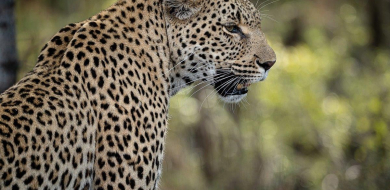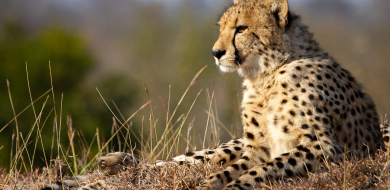Night Photography Tips
on Dec 17, 2014When it gets dark we so often resort to using a flash, or pack away our cameras completely. While the correct use of a full flash or even using just a little fill-in flash will certainly yield great results. I have recently been experimenting with taking low light shots using no flash at all, utilizing only the dull spotlights that the trackers use on night drives.

The benefit of using this light is that it is warm, it gives better contrast as the image is often lit from a different angle not just from behind, and, most importantly, you get a really dramatic dark to black background. In this image a Lioness was waking from an all day sleep. I sat waiting for another Land Rover to arrive as I knew that the safari light would then come at an almost right angle to my current position. I set my camera on my night settings of; Manual, ISO 1000, an aperture of F4 allowing for a lot of light but also keeping my depth of field very short. I used 1/80th of a second exposure. This kind of photography needs a very steady camera so a bean bag or head are really important. With these settings only 1 out of 4 or 5 photos will be sharp but when you get it right - the effect is fantastic. I used a really big lens here (600 F4) in order to get a close-up shot, however this is not a must. A lens in the 200 range is fine. In that case, speed up the camera exposure to about 1/100 - 1/ 160 of a second. Give it a try just after it gets dark and you will often get some amazing purples and blues in the background of the photograph, colours that we do not see with the naked eye.
Happy snapping,
Rod Wyndham






